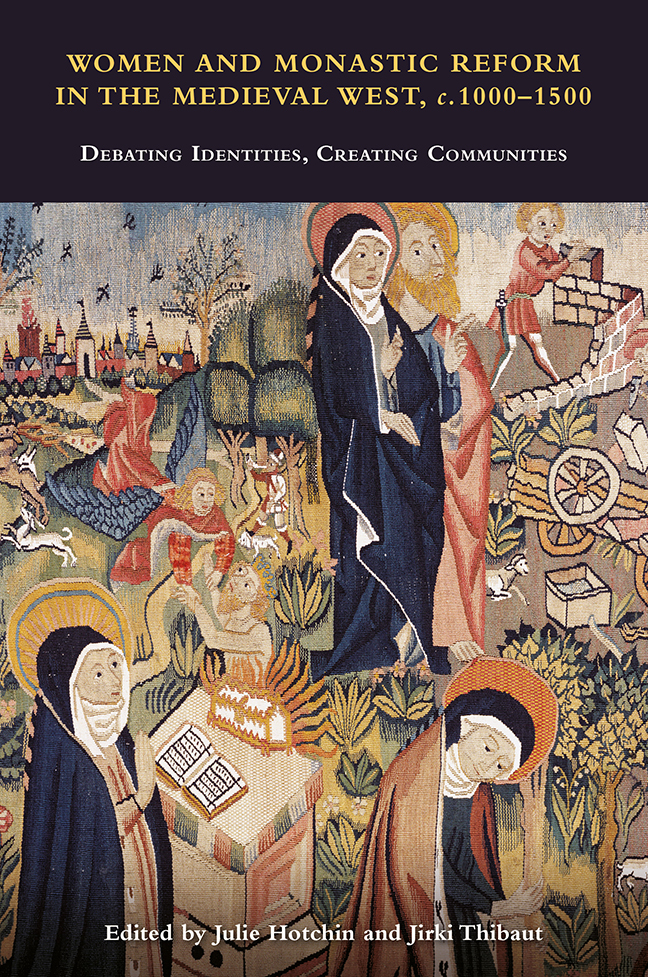 Women and Monastic Reform in the Medieval West, c.1000-1500
Women and Monastic Reform in the Medieval West, c.1000-1500 Over the course of the long fifteenth century, myriad efforts rallied to return religious life to its perceived early customs and authoritative sources. Kaspar Elm once described these initiatives, known collectively as the Observant movement, as an ‘almost incomprehensible variety of local reform’. Controversial practices such as simony and private property bitterly divided communities and prompted calls for change. Intensifying matters further, the common observance and vitality of female abbeys in this period was disproportionately compromised as a result of economic insecurity. Secular and religious leaders alike took notice, and women's religious discipline became the object of heightened scrutiny and external intervention, with or without the approval of the sisters. These leaders imagined temporal scarcity and structural decrepitude to be a product of spiritual laxity, not vice versa. Consequently, histories of late medieval religion have long painted a picture of almost universal religious corruption and decadence in this period, for which the Observance offered a corrective. But in the last several decades scholarship has uncovered a much more complex picture, one that has begun to rehabilitate the intellectual engagement of women.
Reform of women's communities in the fifteenth century was typically initiated and supervised by men but carried out through lengthy visitations and exchanges among nuns themselves. While examples abound of nuns’ resistance to external coercion, contributing to their image as recalcitrant and disorderly, Anne Winston-Allen has argued that nuns generally welcomed opportunities for education and stricter discipline, provided they were grounded in their own rule. These opportunities for teaching and learning were most often administered by women for women through a process that was overwhelmingly oral. Therefore, what this education entailed in individual communities, the extent to which male supervisors were involved, and how men responded to those interactions are questions that histories predominantly reliant on documentary accounts have been ill suited to address. Historians investigating such questions can benefit from other sources attesting to these engagements.
This chapter examines how musical revisions made to the chant books by the nuns of the Cistercian abbey of Beaupré in Grimminge, East Flanders (Baltimore, Walters Art Museum, W. 759–62) reflect a changed understanding of both local tradition and twelfth-century authority, namely that of St Bernard of Clairvaux and the standardised version of Cistercian chant created under his supervision.
To save this book to your Kindle, first ensure [email protected] is added to your Approved Personal Document E-mail List under your Personal Document Settings on the Manage Your Content and Devices page of your Amazon account. Then enter the ‘name’ part of your Kindle email address below. Find out more about saving to your Kindle.
Note you can select to save to either the @free.kindle.com or @kindle.com variations. ‘@free.kindle.com’ emails are free but can only be saved to your device when it is connected to wi-fi. ‘@kindle.com’ emails can be delivered even when you are not connected to wi-fi, but note that service fees apply.
Find out more about the Kindle Personal Document Service.
To save content items to your account, please confirm that you agree to abide by our usage policies. If this is the first time you use this feature, you will be asked to authorise Cambridge Core to connect with your account. Find out more about saving content to Dropbox.
To save content items to your account, please confirm that you agree to abide by our usage policies. If this is the first time you use this feature, you will be asked to authorise Cambridge Core to connect with your account. Find out more about saving content to Google Drive.